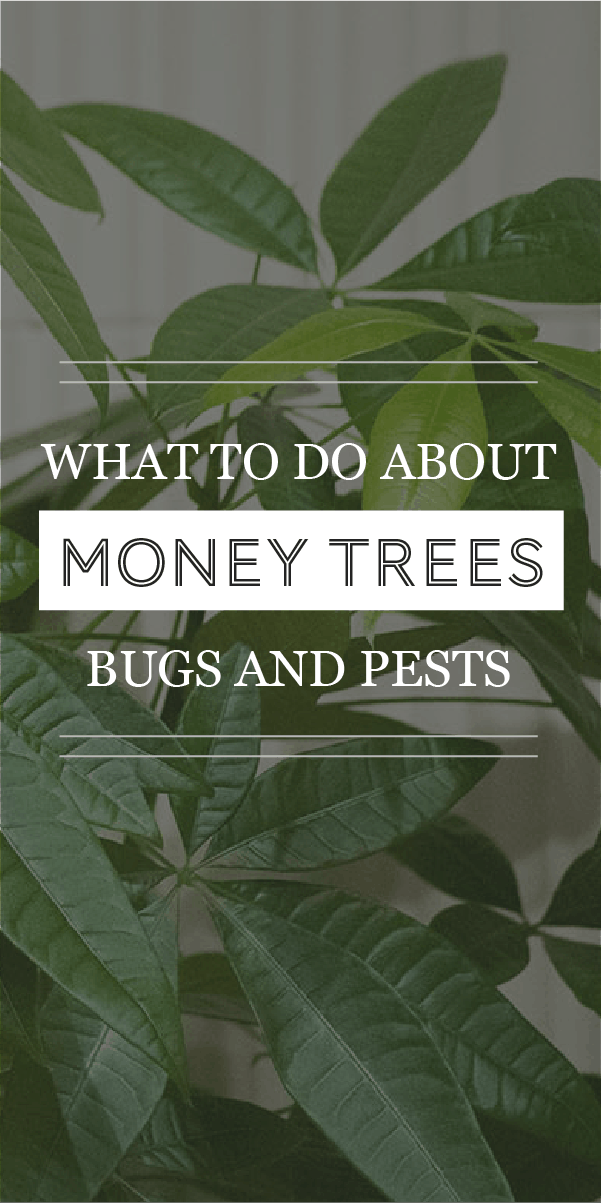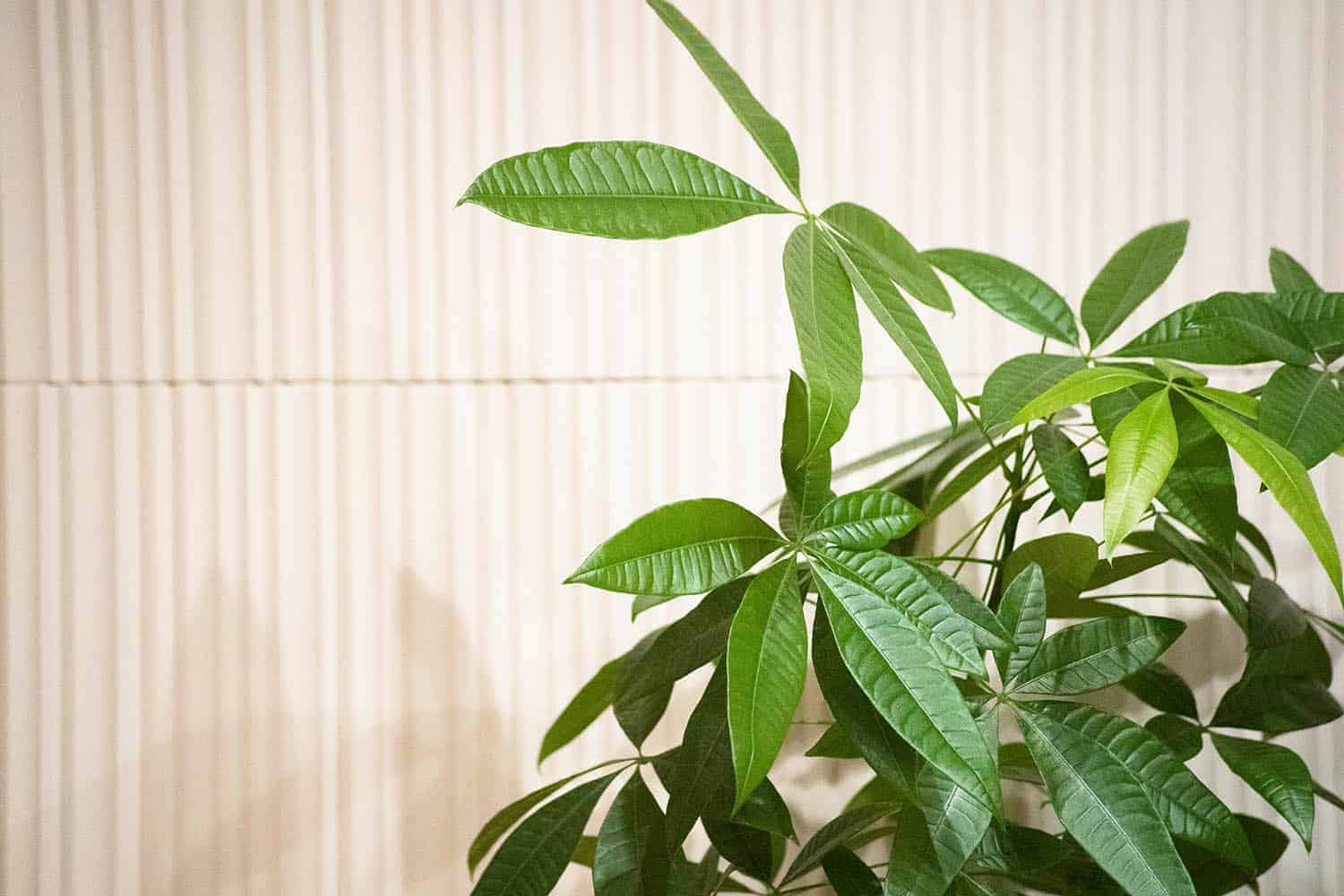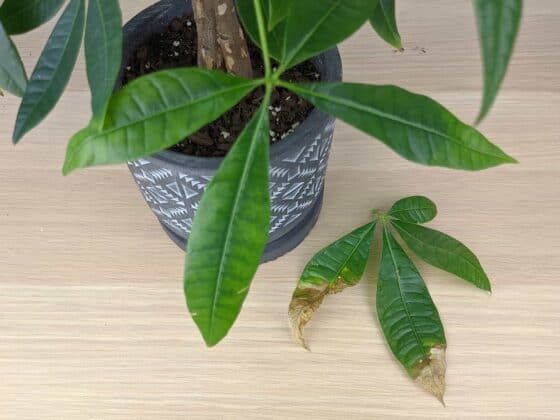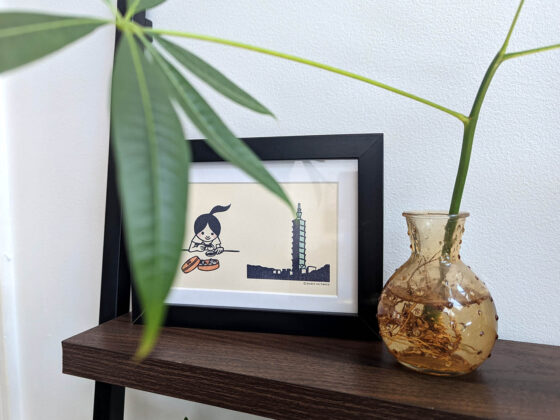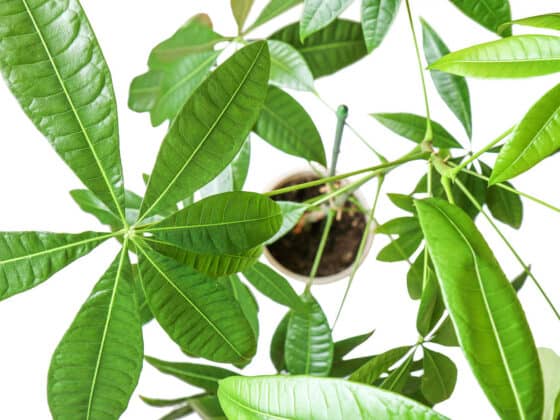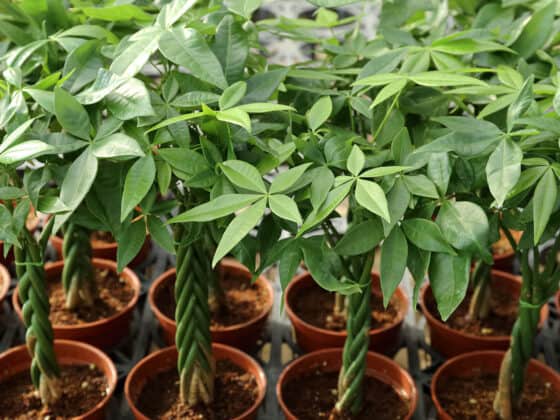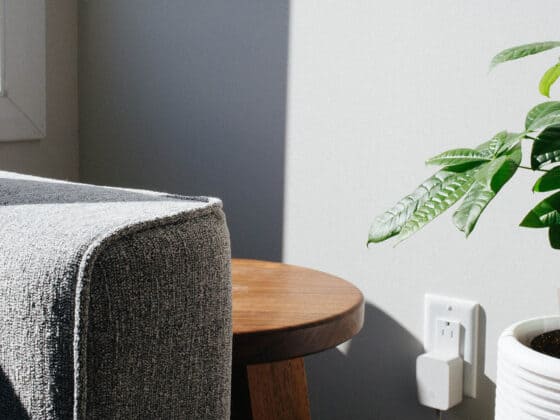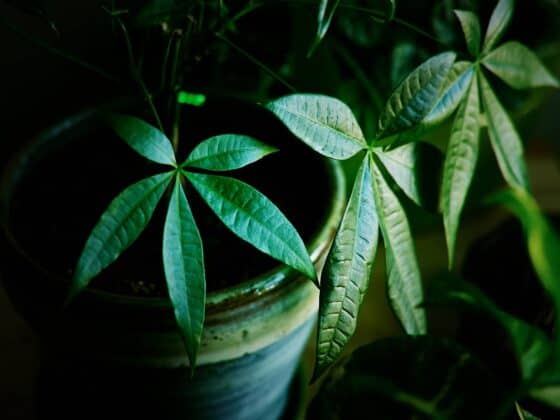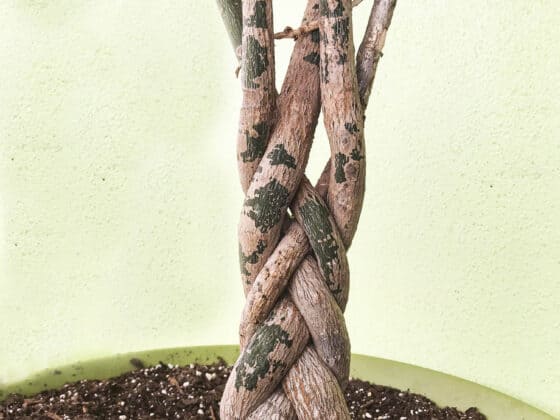Houseplants have become a decorating staple. Interior designers create must-have palettes of houseplants, similar to the way they pick paint colors. Money Trees, in particular, are a well-loved and popular choice. They are beloved by novice plant owners and also famished bugs. After you bring home your Money Tree, you may be wondering how so many insects can inhabit one plant. Do Money Trees really attract bugs and pests?
Do Money Trees attract bugs? Like all other plants, Money Trees are part of the natural food chain. Many bugs and pests will seek out a Money Tree’s sap to feed on as it provides nutrients for these insects. Other pests are attracted to the indoor conditions that Money Trees live in and stay for the free meal.
At first, the thought of pests can freak out even the most advanced houseplant owner. But don’t worry, your Money Tree isn’t doomed to host infestations of biblical proportions. Since it is a houseplant, you can easily control the conditions to create a hostile environment for would-be pests.
The Most Common Money Tree Pests
When you first bought your Money Tree, you were hoping to have a potted piece of the tropics in your home. However, you did not sign up for the entire tropical ecosystem that has taken up residence in your Money Tree. Luckily, you can remedy this situation by identifying the issue and taking a few easy steps to exorcise the pesky pests.
While there are many pests and infestations that your Money Tree can have, we will go over the most common ones that you might experience. This is easy. No prior experience is needed to successfully debug your Money Tree.
It can be scary to find out that you have little vampires feeding on your Money Tree. Pests such as mealybugs, scales, aphids, spider mites, and whiteflies love to use your plant as a food source. They are primarily interested in the sap from your Money Tree.
Phloem sap is a favorite of these pests. This is what transports mineral elements, sugars, and nutrients from the roots to the leaves. These pests attach to stems and leaves and suck out the phloem sap while secreting “honeydew.” Honeydew is just a nicer term for the sweet, sticky poop these critters leave behind.
Fungus gnats, another common pest, aren’t interested in the leaves from your Money Tree. The babies will eat the roots of your Money Tree, while the adults dine on the fungus that has been growing in damp soil.
There are two main groups of pests you will be dealing with. The first set is akin to Goldilocks. Your Money Tree provides climate conditions that are just right for them to live in, and they stay for the free food. Fungus gnats, spider mites, and whiteflies seek out your house and Money Tree for their comfy environment.
The next group is going to be there if they get a chance. Mealybugs, soft brown scale, and aphids are equal opportunists. They aren’t specifically searching for your Money Tree, but they will invade if the opportunity strikes.
The good news is that most of these infestations use similar pest control methods. You can even take proactive steps to ensure your Money Tree is not a never-ending buffet.
Gnats: What To Do About Them
Have you watered your Money Tree only to notice a cloud of flies materializes out of nowhere? These are most likely fungus gnats. Fungus gnats can prove problematic for your Money Tree because their larvae eat the roots of your plant. These adult gnats live for about a week and can lay 300 eggs in the soil. The larvae hatch a few days later and commence their buffet on your Money Tree’s roots. Yuck!
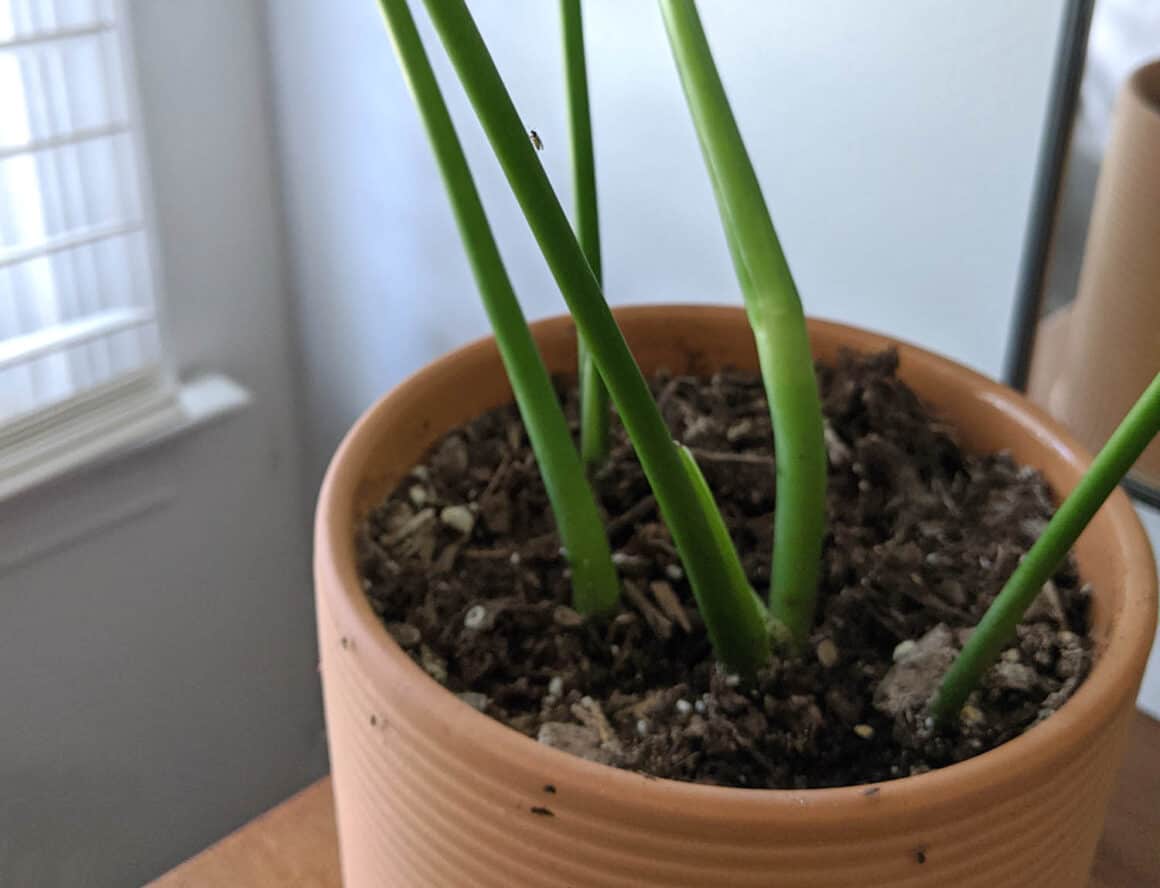
This heavy feasting can stunt the growth of your Money Tree. You might notice the leaves wilting or turning yellow. Not to mention, it’s just gross to have flies buzzing around your house.
Fungus gnats are attracted to moist soil. This moist soil grows fungus that adult fungus gnats feed on. It is this condition that first brings adult fungus gnats to your Money Tree.
If you suspect you may have fungus gnats, here’s what to look for:
- Small flies that resemble a mosquito.
- Flies are about ⅛ of an inch long.
- Fungus flies aren’t strong flyers. They won’t travel too far from your Money Tree. You’ll mostly notice them near windows and when you water your plant.
- ¼ inch long larvae with a black head and a whitish/ see-through body.
To combat that infestation and shut down the buffet, there are a couple of things you need to do. First, make sure you are not overwatering your Money Tree. Remember, the soil needs to dry out between waterings. Allowing the top 2 inches of soil to dry will kill the fungus gnats’ larvae.
Next, double-check your tree is in the right sized pot. A pot that is too large will hold on to excess moisture, setting the perfect conditions for gnats. Your soil should be a well-draining soil similar to a cactus mix. Soils with more organic matter tend to hold on to moisture longer. Fungus gnats and their babies love this.
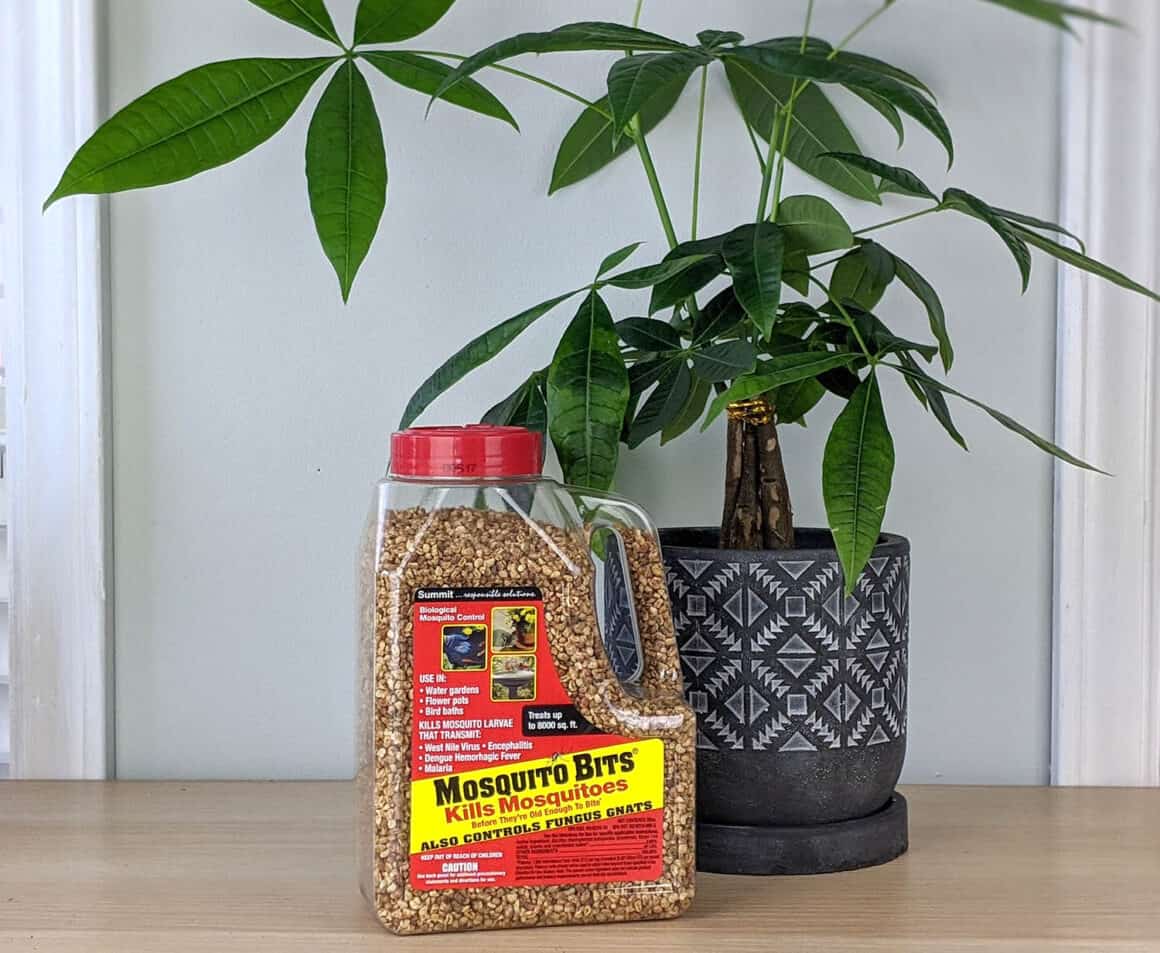
To get rid of these annoying pests, you could pair a biological pesticide with a yellow sticky card. Products like Mosquito Bits’ are hostile to fungus gnat larvae while safe for pets and people. This will kill the larvae from the inside while the yellow sticky cards will take care of the adult flies that buzz around your Money Tree like a garbage pile. Yellow happens to be their favorite color.
If you want to rid yourself of these adult gnats without killing them, consider making a small trap to catch the gnats and then releasing them outdoors. Place a piece of fruit at the bottom of a dish and cover it with plastic wrap. Puncture a few small holes with a pencil in the plastic wrap. The gnats will fly in to eat the fruit and won’t be able to get out. You can then take them outside, a safe distance from your houseplants, and let them go.
Red Spider Mites: What To Do About Them
Have you noticed your Money Tree seems to be getting an early start on decorating for Halloween with spider webs? This could be a sign of spider mites. Spider mites are a pest that shouldn’t be ignored. They can quickly kill your Money Tree by feasting on the sap of the leaves. These leaves curl, discolor, and ultimately fall off the tree.
Spider mites are attracted to the relatively dry conditions in your home, and the lack of predators doesn’t hurt either. Without this limiting factor, spider mites will quickly infest all nearby houseplants.
If you suspect a spider mite infestation keep an eye out for:
- Spiderwebs concentrated on the leaves of your Money Tree.
- Dusty looking leaves that look dry from afar.
- Small holes in the leaves of the plant.
- Tiny moving dots. Spider mites are too small to see clearly.
Once you are sure that your Money Tree has spider mites, immediately quarantine your plant until you’re certain the infestation is over. You will want to treat the infestation as quickly as possible.
To treat, you can create a homemade insecticidal soap. Mix 1 tsp of mild soap with 1 liter of lukewarm water and spray this mixture on the leaves’ undersides. Use this instead of chemical-based pesticides as the mites will quickly adapt and survive additional chemical sprays.
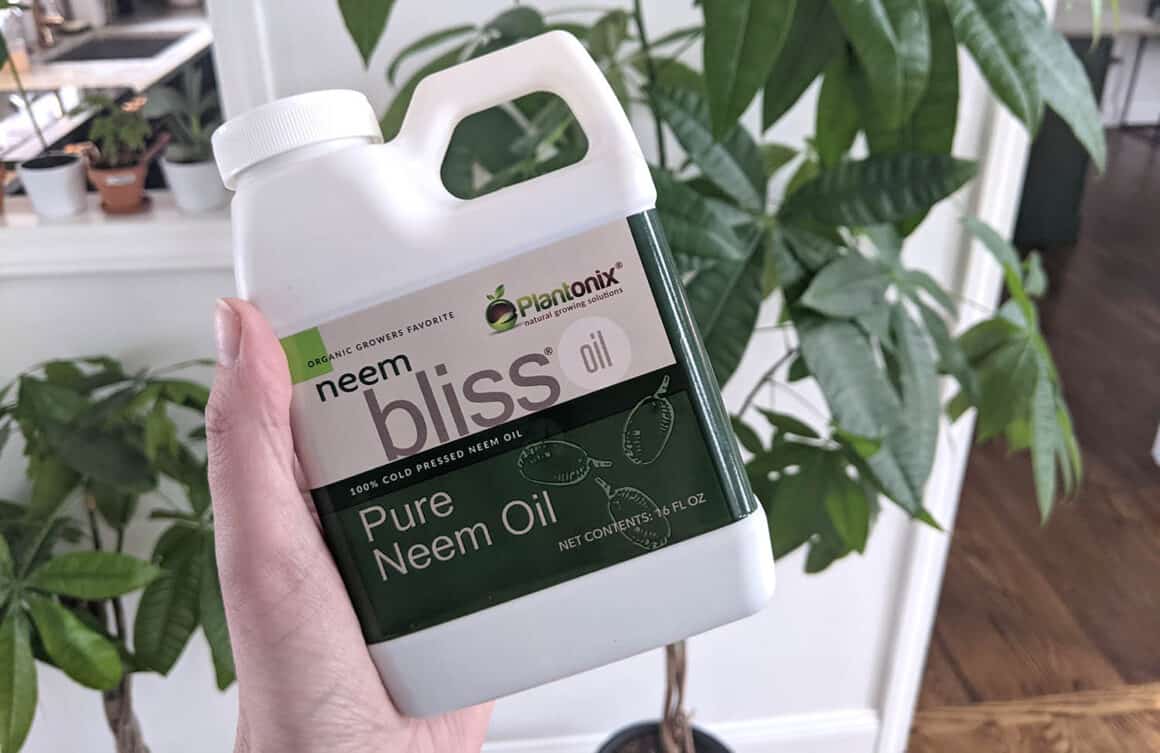
To prevent future infestations, use a neem mix for maintenance. Add an extra 1 ½ teaspoons of neem oil concentrate to the above soap and water mix. Neem oil takes longer to be effective, so it makes a better preventative measure. Incorporate this into your regular Money Tree care.
Also, increasing the humidity around your Money Tree will deter future spider mites who love dry conditions. Mist your Money Tree, add a pebble tray, or turn on a humidifier to keep the humidity higher.
Whiteflies: What To Do About Them
After you bumped into your Money Tree, a white cloud materialized and then disappeared into your Money Tree. No, your favorite houseplant is not practicing to become a magician. You have a whitefly infestation. These tiny flies are so small that they can even fit through window screens! They seek out your home due to the warmer temperatures. Once you suspect you have them, you must move quickly because their population will explode.
Whiteflies, similar to aphids and scales, suck on the sap from your Money Tree and excrete honeydew. While these whiteflies may not spell certain death for your Money Tree, they rob your plant of vital nutrients, eventually retarding the growth. Again, with honeydew comes sooty mold. This mold isn’t harmful, but who wants mold in their house?
Try and catch these annoying little critters early before you inhale a few every time you pass by your Money Tree. Here are some telltale signs:
- A white cloud of moth-like bugs emerges whenever you brush by a leaf. (If the white bugs didn’t fly, they would be mealybugs.)
- They like to collect on the undersides of leaves.
- They create sticky honeydew on your Money Tree and its surroundings.
Since adult whiteflies will flee if you slightly disturb them, you have to treat the younger flies attached to your tree and the adult escape artists separately. The insecticide soap we made for other bug infestations can be used for the juvenile bunch (1 tsp of mild soap with 1 liter of lukewarm water). Spray them with the soap focusing on the underside of the leaves. Catch their tricky parents with the yellow sticky cards. You can also gently take a vacuum to the adults if you want an immediate solution.
If you love finding ladybugs on your weekend hikes, they actually are great predators of whiteflies. You can buy live ones online to save you the time of finding and transplanting them. As with other infestations, a neem spray is a staple for preventing a whitefly takeover. You may not be able to prevent these tiny nuisances from entering your house, but you can be prepared.
Mealybugs: What To Do About Them
Your Money Tree seems to be growing a fuzzy coat on its leaves and stems. No, your plant is not gearing up for winter, it might be a mealybug attack. Mealybugs enjoy drinking the sap from your Money Tree. They prefer the new growth on your tree and tend to congregate around these areas, but they won’t turn down a meal on other parts of your plant.
Mealybugs are destructive because severe infestations can cause your Money Tree to wither and die. Heavy infestations also produce a large quantity of honeydew that promotes sooty mold fungus. This dark-colored fungus compromises your Money Tree’s photosynthesis ability. They are a type of scale.
Look out for these telltale signs of a mealybug problem:
- Small white fuzzy bugs.
- White cottony growths around leaf nodes and stems.
- Leaves look shinier than usual due to honeydew.
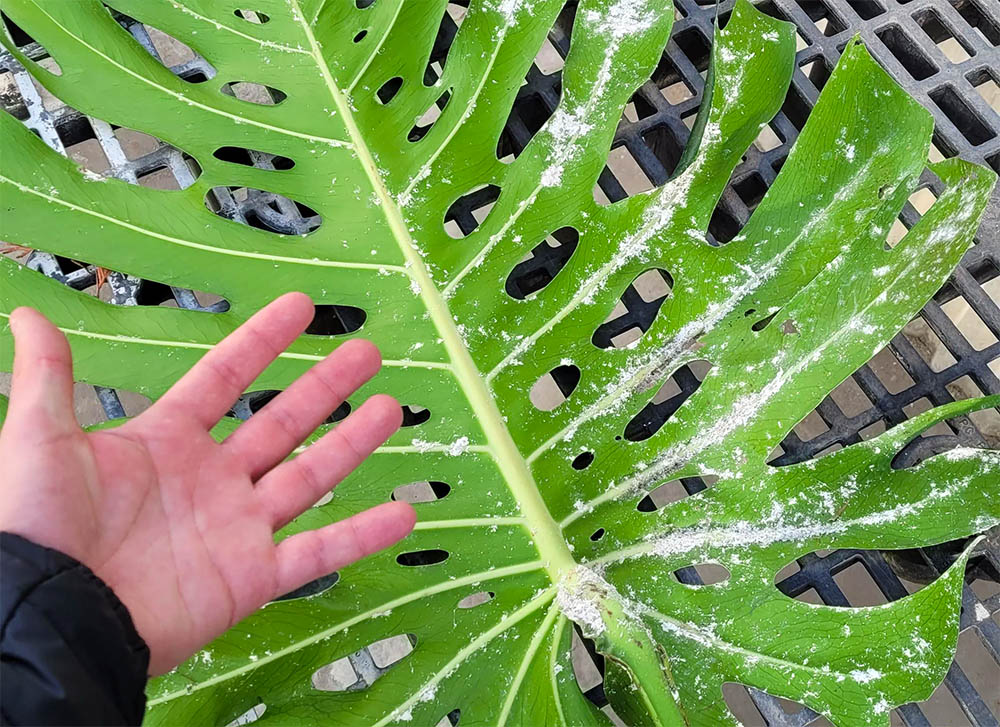
To kill these critters immediately, you can take a cotton swab dipped in rubbing alcohol and soak them. You may have to repeat this a few more times to get rid of the infestation. Homemade insecticidal soaps work well with them also. Add a teaspoon of mild soap to a liter of water and spray your Money Tree.
For long term maintenance, use neem oil in your insecticidal mix. The soap and water combination won’t last past the spraying. Neem oil will deter these pests from returning.
Soft Brown Scale: What To Do About Them
Your Money Tree seems suddenly sticky to the touch. You notice the leaves are shinier and have a weird tackiness to them. Money Trees are resistant to many pests, but scales are a formidable enemy. It might be easy for a novice to assume the small little brown dots that have taken up residence on their plant are just part of it.
The soft brown scale extracts the sap from your Money Tree, and like the mealybug, produces honeydew. Your Money Tree’s leaves will turn yellow and fall off in time from the lack of nutrients. The honeydew also attracts a host of other pests like ants that love to eat it. Black sooty mold grows from honeydew also and will cover the leaves of your Money Tree.
You can identify soft brown scale by looking for:
- Small round brown growths on your Money Tree.
- Round growths are hard to remove.
- Sticky leaves from honeydew.
- Pot or items below Money Tree are sticky.
- Black sooty mold, indicative of honeydew.

The Soft Brown Scale is particularly hard to get rid of because they are like the armored tanks of Scales. Their hard bodies make them resistant to many pesticides and insecticides. Oil sprays can be used on these scales because it coats their hard shells and prevents them from breathing. You can buy ready-made oil sprays, like horticultural oil online.
The oil sprays are handy because they will also kill sooty mold that frequently accompanies these infestations. For best results, the horticultural oil should be sprayed when scales are in their crawler phase. They are more mobile then and softer. In this stage, they are more susceptible to sprays and insecticides. You will need to consistently spray your Money Tree for a month.
Aphids: What To Do About Them
Aphid populations seem to explode out of nowhere. They breed like rabbits to quickly infest your Money Tree. Their meal of choice is also the sap from your plant.
These little insects can barely be seen with the naked eye, but produce enough honeydew to attract a parade of ants and sooty mold. Treat their infestation quickly to halt their population growth. While most cannot fly, they birth aphids with wings when they need to migrate to colonize your other houseplants.
Since they enjoy the younger greener parts of your Money Tree, if left to their own devices, you will notice curling, yellow leaves that are misshapen. This may stunt the future growth of your Money Tree.
Here is what you need to know to identify an aphid infestation:
- Sticky honeydew on your Money Tree’s leaves, pot, or on the floor below.
- Tiny, usually green pear-shaped insects with 2 long antennae and 2 tube-like structures on their rear.
- They typically cluster together in groups on your plant.
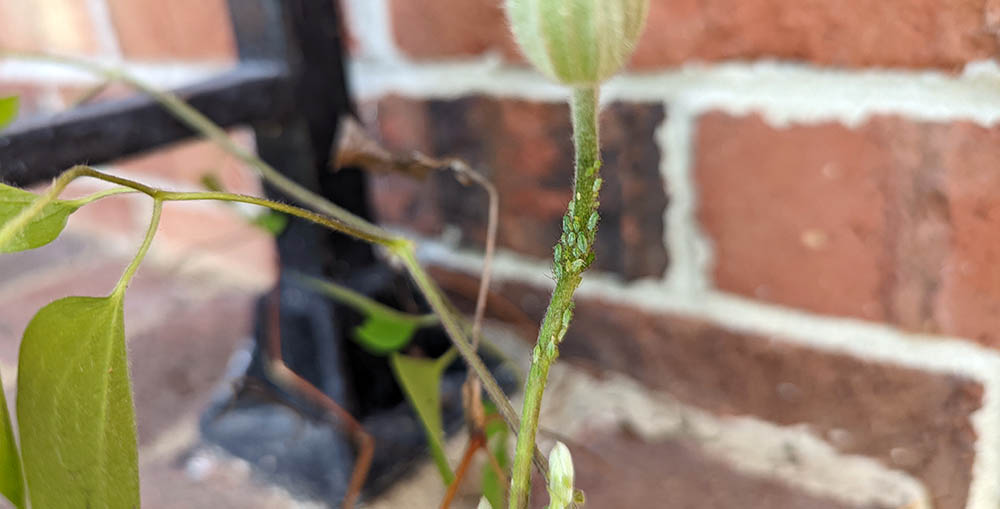
Insecticidal soap also works for aphids. Use the above recipe for the insecticidal soap (1 tsp of mild soap with 1 liter of lukewarm water). Remove any parts of your Money Tree that are heavily infested with aphids. It may be easier just to remove these parts and treat the rest of your tree. Reapply the insecticidal soap every couple of days for 2 weeks.
Neem oil will work quickly on these soft-bodied insects. To prevent further infestations, use a horticultural oil during winter months to kill the aphid eggs that overwinter. Diatomaceous earth is also a great preventative. It is made from fossilized ocean organisms. When aphids walk over these sharp pieces, it cuts their bodies.
Tips On How To Avoid Bugs On Your Money Tree in The Future
To prevent future infestations of these pests, you can take proactive steps to deter these takeovers. A little planning and new habits will save you from cleaning sticky honeydew off your floor while simultaneously choking on your whitefly cloud.
The first thing you need to be aware of is the condition you bring plants home in. When looking to adopt a new plant baby, thoroughly inspect its leaves, stems, and soil. Pick a plant that is pest-free to the best of your knowledge. Each new houseplant you introduce has the potential to infect your current houseplants, including your Money Tree.
Once your Money Tree is home, make sure the conditions aren’t too dry or too humid and stuffy. Insects that are quickly drawn to these conditions will be less likely to make the pilgrimage if your home isn’t a climatic fit.
Choose the correct pot size for your Money Tree. Pots that are too large encourage extra moisture retention that certain pests thrive in. Put well-draining cactus potting mix in your pot with a little extra perlite or other well-draining material. Since Money Trees require such deep watering, well-draining soil is essential to their root health. If you are concerned about nutrients, remember that you should routinely fertilize your Money Tree to keep it healthy.
Properly watering your Money Tree is critical in preventing some of these pests. Stick a finger into your Money Tree’s soil. Only water it when the top 2-4 inches are dry. When you do water, water it until you can see droplets of water coming out of the pot’s holes. After an hour, empty the pot saucer.
Money Trees love a good misting. Misting also deters pests from making your Money Tree their home. Add a bit of neem oil concentrate to your misting bottle. Neem is effective on most pests that your Money Tree will encounter, but it will need to be absorbed.
Neem oil is absorbed by your Money Tree and disperses to all the tissues of your tree. When pests attempt to feed, the neem oil stops them in their tracks and even prevents larvae from maturing. Neem oil interferes with mating and even suffocates some insects. Neem oil is the GOAT (greatest of all time) of pest management.
Neem is also one of the safest environmental choices you can make. It won’t accumulate in your soil or need to be washed off. Your kids and pets will be safe.
To receive all these beneficial effects, use a neem soil drench once a month. To a quart of warm water, add a teaspoon of castile soap and a tablespoon of neem oil. Mix and use this to water your Money Tree.
The roots will absorb the neem and distribute it through its vascular system. This same recipe can be used to spray the leaves and stems. This little habit will guard against most infestations. Did I mention this concoction prevents mildew and root rot!
